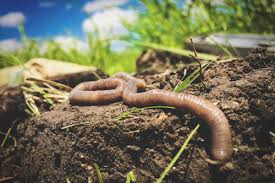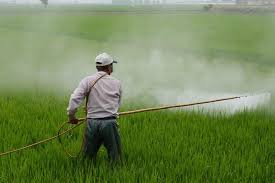Pesticides can enter the body through inhalation of aerosols, dust, and vapor containing pesticides; through oral exposure by consuming contaminated food or water; and through skin exposure by direct contact.
Pesticides seep into soils and groundwater, potentially contaminating drinking water, while pesticide spray can drift and pollute the air. The effects on human health depend on the chemical’s toxicity and the duration and magnitude of exposure.
Farm workers and their families face the greatest exposure to agricultural pesticides through direct contact. Pesticides are present in every human’s fat cells.
Children are more susceptible to pesticides due to their developing systems and weaker immune systems compared to adults.
Greater exposure occurs because of their proximity to the ground and tendency to put unfamiliar objects in their mouths. Hand-to-mouth contact varies by age, similar to lead exposure.
Children under six months are more likely to experience exposure through breast milk and inhalation of small particles. Pesticides tracked into homes by family members increase exposure risks.
Toxic residues in food may contribute to children’s exposure. These chemicals can bioaccumulate in the body over time.
Exposure effects range from mild skin irritation to birth defects, tumors, genetic changes, blood and nerve disorders, endocrine disruption, coma, or death. Developmental effects are associated with pesticides.
Recent increases in childhood cancers in North America, such as leukemia, may result from somatic cell mutations. Insecticides targeting insect nervous systems can harm mammalian nervous systems, causing chronic and acute alterations in exposed individuals.
DDT and its breakdown product DDE disrupt estrogenic activity, potentially leading to breast cancer. Fetal DDT exposure in animals reduces male penis size and can cause undescended testicles.
Pesticides can affect fetuses during early development, in utero, or if a parent was exposed before conception. Reproductive disruption may occur through chemical reactivity or structural changes.
Read Also: Gray Leaf Spot (Stemphylium spp) – Symptoms and Damage Control
Effects of Pesticides on Terrestrial Ecosystems in Agriculture

Pesticides, designed as biocides to target specific organisms, can have significant adverse environmental effects, ranging from obvious to subtle and complex. Some pesticides are highly specific, while others are broad-spectrum, impacting terrestrial wildlife, soil, water systems, and humans.
Pesticides have notably affected birds, especially those at higher trophic levels, such as bald eagles, hawks, and owls, which are rare, endangered, and susceptible to pesticide residues from bioconcentration of organochlorine insecticides through terrestrial food chains.
Pesticides may kill grain- and plant-feeding birds, and declines in rare duck and goose species have been reported. Populations of insect-eating birds, such as partridges, grouse, and pheasants, have decreased due to the loss of insect food in agricultural fields from insecticide use.
Bees, vital for pollinating crops and wild plants, are often killed by pesticides despite screening for bee toxicity and strict regulations on toxic pesticides. This reduces yields of crops reliant on bee pollination.
Pesticides can kill natural enemies of pests, leading to new pest species and increased pesticide dependence, akin to drug dependence.
The effects of pesticides on biodiversity in agricultural landscapes, whether direct or indirect, represent a major adverse environmental impact.
Environmental Consequences of Pesticides in Agriculture
The environmental impact of pesticides includes effects on non-target species. Over 98% of sprayed insecticides and 95% of herbicides reach destinations other than their targets, as they are applied across entire agricultural fields.
Runoff carries pesticides into aquatic environments, while wind transports them to other fields, grazing areas, human settlements, and undeveloped areas, potentially affecting other species. Issues arise from poor production, transport, and storage practices.
Repeated application increases pest resistance, while effects on other species can facilitate pest resurgence. Each pesticide or class has specific environmental concerns, leading to bans or restricted use of many pesticides.
Over time, pesticides have become less persistent and more species-specific, reducing their environmental footprint. Application amounts per hectare have declined, sometimes by 99%. However, global pesticide use, including older, banned pesticides in some regions, has increased.
Pesticide Contribution to Air Pollution in Agriculture
Pesticides contribute to air pollution through pesticide drift, where suspended particles are carried by wind to other areas, potentially contaminating them. Pesticides applied to crops can volatilize and be blown into nearby areas, posing threats to wildlife.
Weather conditions, temperature, and relative humidity affect pesticide spread in the air. Increased wind velocity enhances spray drift and exposure.
Low humidity and high temperatures cause more spray evaporation. The amount of inhalable pesticides in outdoor environments often depends on the season.
Droplets or dust particles from ground-applied pesticides may travel on the wind, and pesticides may adhere to wind-blown dust.
Ground spraying produces less drift than aerial spraying. Buffer zones of empty land or non-crop plants, such as evergreen trees, can serve as windbreaks to absorb pesticides and prevent drift.
Pesticides sprayed onto fields or used to fumigate soil release volatile organic compounds, which react with other chemicals to form tropospheric ozone, accounting for about 6% of total tropospheric ozone levels.
Read Also: Recommended Number of Ruminant Animals per Housing Unit for Fattening
Pesticide Effects on Soil Health in Agriculture

Many pesticides are persistent soil contaminants, with impacts lasting decades and adversely affecting soil conservation. Pesticide use reduces soil biodiversity, while avoiding pesticides improves soil quality, increasing organic matter and water retention.
This enhances yields in drought years, with organic farms achieving 20-40% higher yields than conventional ones. Lower organic matter content increases pesticide runoff, as organic matter binds and breaks down pesticides.
Degradation and sorption influence pesticide persistence in soil, controlling their transport to water, air, and food. Degradation involves microbial interactions, while sorption affects bioaccumulation, which depends on soil organic matter.
Nitrogen fixation, essential for plant growth, is hindered by pesticides like DDT, methyl parathion, and pentachlorophenol, which disrupt legume-rhizobium signaling, reducing nitrogen fixation and crop yields.
Root nodule formation reduces the need for synthetic nitrogen fertilizers. Pesticides can kill bees, contributing to pollinator decline, where worker bees abruptly disappear.
Pesticide application to blooming crops kills honeybees, vital pollinators. Pesticides also directly harm plants, causing poor root hair development, shoot yellowing, and reduced growth.
Impact of Pesticides on Aquatic Ecosystems in Agriculture
Pesticide movement into surface and groundwater is well-documented, affecting wildlife and sometimes contaminating human drinking water beyond safe levels.
Widespread fish and marine invertebrate mortality results from agricultural contamination of waterways through fallout, drainage, runoff erosion, and industrial effluent discharge.
Many organisms providing fish food are highly susceptible to pesticides, amplifying indirect effects on fish populations. Pyrethroid insecticides are extremely toxic to most aquatic organisms, causing significant losses in global fish production.
Pesticide-contaminated water harms fish and aquatic biota. Herbicide application to water bodies kills plants, reducing oxygen levels and suffocating fish.
Repeated pesticide exposure causes physiological and behavioral changes in fish, such as nest abandonment, reduced disease immunity, and decreased predator avoidance, lowering populations.
Pesticides reach surface water through runoff from treated plants and soil, with widespread contamination. Groundwater pollution by pesticides is a global issue, often requiring years and high costs for cleanup, if feasible.
Four main routes deliver pesticides to water: drift during spraying, percolation through soil, runoff, or spills from accidents or neglect.
Eroding soil can also carry pesticides to water. Factors affecting water contamination include pesticide water solubility, distance from application site to water, weather, soil type, crop presence, and application method. Pesticide runoff into rivers and streams can be highly lethal, sometimes killing all fish in a stream.
Herbicides like copper sulfite, used to kill aquatic plants, are toxic to fish at concentrations used for plant control. Pesticides can kill zooplankton, a primary food source for young fish, or insects that fish feed on, forcing fish to travel farther for food and increasing predation risks.
Faster pesticide breakdown reduces threats to aquatic life. Insecticides are generally more toxic to aquatic organisms than herbicides or fungicides. Amphibian population declines worldwide may partly result from pesticides.
Pesticide mixtures have cumulative toxic effects on frogs, with tadpoles in multi-pesticide ponds taking longer to metamorphose, being smaller, and less able to catch prey or avoid predators.
The organochloride endosulfan, at levels found near sprayed fields, kills tadpoles and causes behavioral and growth abnormalities.
The herbicide atrazine can turn male frogs into hermaphrodites, reducing reproductive capacity. Both reproductive and non-reproductive effects are reported in aquatic reptiles and amphibians.
Do you have any questions, suggestions, or contributions? If so, please feel free to use the comment box below to share your thoughts. We also encourage you to kindly share this information with others who might benefit from it. Since we can’t reach everyone at once, we truly appreciate your help in spreading the word. Thank you so much for your support and for sharing!

